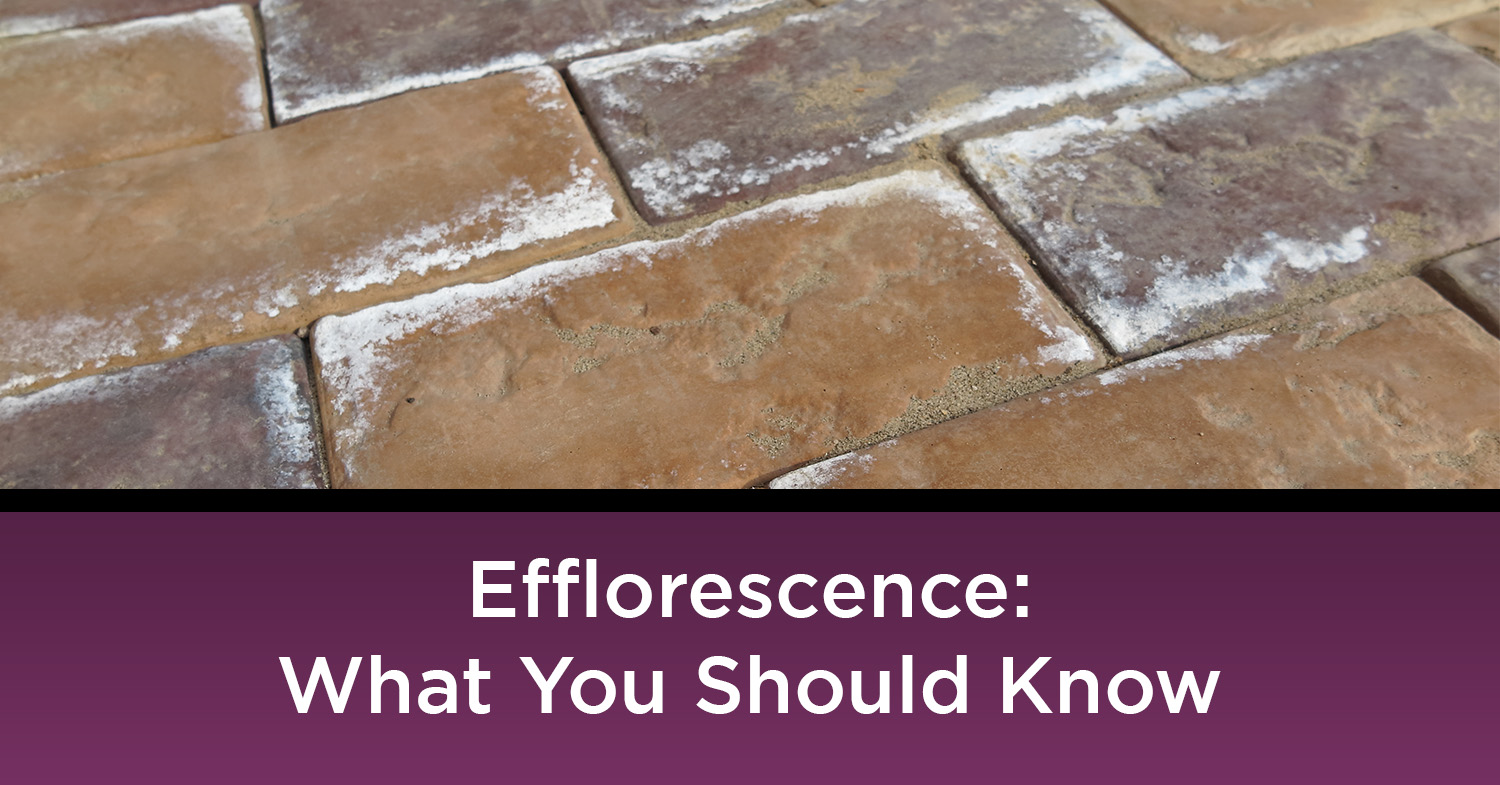
Efflorescence: What You Should Know
Have you noticed a strange, white powdery substance on your walls and hardscaping? Say hello to efflorescence. Let me go over what it is, how it occurs, and how you can remove it.
What is Efflorescence?
Efflorescence is a crystalline substance that occurs when water evaporates and leaves behind salt deposits on the surface. In French, this term means the act of blossoming and literally translates to “flower out.” And you may notice the white powder blooming on your concrete, stucco, and stones, especially during the monsoon season here in Phoenix. Though it can be caused by rain, it can also be caused by groundwater, which is notoriously hard here.
It can appear both inside and outside your home. For it to occur though, there are three conditions needed for efflorescence to accumulate:
- There must be water-soluble salt
- There needs to be a source of moisture
- Materials need to be porous enough to allow salt to seep through their surface
Does This Cause Damage to Homes?
If you notice your home has this chalky powder, you may begin to ask yourself, “is this harmful?”, “does it go away?”, “is this dangerous to my health?” And while efflorescence is unsightly, it’s naturally occurring and should not be feared as it poses no adverse health risk. This is, first and foremost, a cosmetic issue, but that doesn’t mean it should just be left on your pavers and concrete.
According to the International Association of Certified Home Inspectors, it can be a sign of moisture intrusion, and that may eventually cause structural damage down the line. So this issue needs to be addressed and removed, if not for aesthetic reasons, then for the long-term protection of your home.
Identifying Efflorescence
Before you go about removing it, it’s important to make sure you do have efflorescence on your hands. Sometimes you might just have staining or even mold.
Staining can come in a variety of colors and can appear on many different surfaces. Efflorescence will be a greyish-white and have a powdery texture. It will also only appear on unsealed organic surfaces like brick, cement, and clay.
Mold, on the other hand, will also only appear on organic substances, but it can feed off of dirt within cracks found on brick or concrete. One very simple test to see what you are dealing with is to pinch the substance between your fingers. Efflorescence will break down into a powder, while mold will not. You can also take a glass of water and drop some of the substance into it. Mold will not dissolve; efflorescence will. If you find that you have mold, call a mold remediation specialist to get it taken care of.
Removal Processes
There are quite a few removal options for homeowners, depending on how severe the efflorescence is.
Household vinegar is an effective and cost-effective option for getting rid of build-up. Simply dilute some white vinegar and apply it to the surface with a sponge or spray bottle. Allow the solution to sit on the surface for a few minutes, and then wipe it dry. This is a less harmful solution and something you can attempt yourself. Remember to use distilled water from the store, as hard Phoenix water could allow you to end up right where you started.
A stronger acid, such as diluted muriatic acid, can be used to dissolve efflorescence. Muriatic acid is toxic, so letting a professional handle this process is the best solution.
Pressure washing can also help remove and dissolve the substance when it’s stubborn and just won’t go away. If you go this route, be sure not to exceed 1,000 psi. If you’ve never pressure-washed something before, it’s best to call in the professionals to lend a hand.
Whatever method you decide to use, know that it’s important to tackle removal in warm, dry weather.
Prevention
To help prevent further build-up in the future, there are a few steps homeowners can take. The easiest way to prevent it from reoccurring is to eliminate sources of water from depositing on the surfaces on which it forms. For example, this can mean changing the direction or even location of the sprinklers in your yard to avoid excess water depositing on your pavers or walls.
Since rainfall is still an issue, sealing or applying water repellents to your hardscape can help prevent future build-up of this substance. This may be a periodic process you need to take part in, but it should greatly reduce future efflorescence from popping up.
Selling or Buying a Home? I’d be Honored to Assist You
If you’re looking to buy or sell your luxury home in the Far North Valley Phoenix area, it’s crucial you work with someone who knows about the area, including knowing about issues that homeowners deal with and what they can do to fix them. I live, work, and play in the Far North Valley and make it my mission to be a resource of information for my clients so I can provide the help needed, whether it’s about the real estate market, how to get rid of efflorescence, or recommendations for the best golf courses.
I’m Luxury Real Estate Agent Darrell Doepke, and I’m ready to embrace your expectations as a seller or buyer. No matter if you’re a first-time luxury seller or a repeat luxury buyer, you can rest assured that I have the experience to guide you through the real estate process with exceptional service. I specialize in the Far North Valley of the Phoenix luxury real estate market and would love to get in contact with you.















